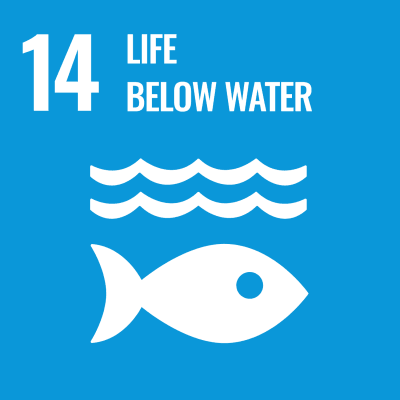-
Faculty of Veterinary Medicine, Department of Veterinary Medicine
- Associate professor
- Tohru MEKATA
- Research Field
Fish pathology, Comparative Immunology
- Keyword(s)
Aquatic pathogens, Disease prevention, Innate immunity
- Research theme
-
- Exploring pathogenic factors in fish and shellfish
- Disease control of farmed fish and shellfish
- Shrimp immunity
Outline of research activities

Two major research themes have been addressed. The first is the identification of novel pathogens and the development of disease control methods for fish and shellfish. In aquaculture farms, mortality caused by unidentified diseases is often observed. The causative factors are quite complex including deterioration of the environment, nutritional disorders, and outbreak of infectious diseases. With recent advances in aquaculture technology, the targeted species for aquaculture have expanded, and new infectious diseases have been reported one after another. Therefore, we are exploring the pathogens using a comprehensive genetics approach to develop the diagnosis methods and control the diseases. Second, we are also studying the unique immune system in shrimp. As invertebrates, shrimp have no adaptive immune system like vertebrates. However, they show some resistance to re-infection of particular pathogen, like a phenomenon known as “immunological memory”. We hope to elucidate the mechanism of this phenomenon and propose new disease control measures to improve productivity.
- Desired cooperation
-
- Histopathological research on emerging diseases
- Molecular epidemiology of aquatic pathogens
- Development of advanced aquaculture techniques
-
Faculty of Veterinary Medicine, Department of Veterinary Medicine
- Associate professor
- Tsunehito HIGASHI
- Research Field
Toxicology, Molecular Pharmacology
- Keyword(s)
Cell Death, Cytotoxicity, Cigarette Smoke, Oxidative Stress
- Research theme
-
- Mechanisms for cytotoxicity of chemical compounds
- Effects of cigarette smoke on cellular activities
- Relationship between oxidative stress and cell physiology
Outline of research activities


There are many types of chemical compounds in our environment, and some of them have negative effects on our bodies. Cigarette smoking is a risk factor for various diseases such as atherosclerosis, hypertention, COPD, and cancer. However, there are no clear information which chemical compounds in the cigarette smoke have negative effects on our bodies and cause these diseases. I have previously identified unsaturated carbonyl compounds as stable cytotoxic factors in the gas phase of cigarette smoke. The unsaturated carbonyl compounds are also contained in the smoke from combustion of organic materials such as woods, oil, coal. Thus, the unsaturated carbonyl compounds are regarded as environmental pollutants. The purpose of my study is elucidation of the molecular mechanisms for cytotoxicity of environmental pollutants including unsaturated carbonyl compounds.
- Desired cooperation
-
- Pathologycal analyses
- In vivo analyses
- Comprehensive analyses
-
Faculty of Veterinary Medicine, Department of Veterinary Medicine
- Associate professor
- Tsuneyuki MASUDA
- Research Field
Animal health and hygiene
- Keyword(s)
Livestock chronic infection, Bovine viral diarrhea, Enzootic bovine leukosis
- Research theme
-
- Effect of chronic infection on productivity
- Establish a model to prevent the spread of BLV and BVD
- Study of insect pest-control using natural maerials
Outline of research activities

Infectious livestock diseases, such as highly pathogenic avian influenza recognized as acute infection that cause tremendous damage to the livestock industry. Acute infections develop relatively early and have significant clinical symptoms, making outbreaks easily recognizable. Conversely, chronic infections that decrease livestock productivity, such as enzootic bovine leukosis (BLV) and bovine viral diarrhea (BVD), have become problematic in recent years. Generally, eradication of chronic infections is extremely difficult and requires considerable time and effort.
I want to study the Effect of these diseases on the livestock industry using field cases, and want to research the viable approach of preventing the spread of BLV and BVD. I also study environmentally friendly insect pest-control using natural materials, such as commercially available diatomite product.- Desired cooperation
-
- Veterinary epidemiology
- Virology
- Theriogenlogy
-
Faculty of Veterinary Medicine, Department of Veterinary Medicine
- Associate professor
- Yoshiki ITOH
- Research Field
Veterinary Ophthalmology, Electrophysiology of Vision
- Keyword(s)
Vision, Cornea, ERG, VEP, Glaucoma, Ophthalmic Disease
- Research theme
-
- Development of visual evaluation method of animals by electrophysiological examination of vision
- Research of animals' vision: the influence of diseases and treatments
- Pathophysiological analysis of ophthalmic diseases using higher order image analysis equipment
Outline of research activitiesVision is indispensable sense “veterinary ophthalmology”, as visual information obtained by seeing the objects is important for us.
However, the “visual acuity” examination using the Landolt’s ring like a human (mark like “C” in the alphabet) is impossible in dogs and cats and other animals. So how do you determine the animal’s visual acuity?
One method is to measure brain waves called “visual evoked potentials (VEP)” and evaluate whether the brain recognized the targets.
We are developing “Visual Evaluation Methods of Animals” using “electrophysiological exams of vision”, including VEP measurement.
We suppose that highly accurate visual assessment of animals will allow us to better diagnose and treat ophthalmic disorders in areas essential to constitute the vision of the cornea, lens, retina, etc. in the eye.In addition, our laboratory uses ophthalmologic examination equipment such as Optical Coherence Tomography (OCT), which has developed remarkably in recent years, in clinical veterinary ophthalmology, and is conducting research on the pathophysiological analysis and treatments of ophthalmologic diseases.

- Desired cooperation
-
- Reseaches on comparative ophthalmology
- Pathophysiological analysis and Treatmetns of Ophthalomic diseases, especially Glaucoma and Retinal diseases.
-
Faculty of Veterinary Medicine, Department of Veterinary Medicine
- Lecturer
- Borjigin LIUSHIQI
- Research Field
Veterinary Animal Hygieiology, Animal Genetics, Zoonotic Disease, Viral Epidemiology
- Keyword(s)
Cattle, Horse, Burkholderia mallei, Mycobacterium bovis, Bovine leukemia virus (BLV)
- Research theme
-
- Control of bovine leukemia virus (BLV) infection using bovine major histocompatibility complex (BoLA) alleles
- The project for control of tuberculosis and glanders
- Genetic analysis of Asian native horses
Outline of research activitiesWe have identified the bovine major histocompatibility gene complex (BoLA) alleles resistant and susceptible for BLV in five tethered house farms in the Kanto region of Japan, and we have conducted the BLV control strategy using resistant and susceptible cattle. In the future, I would like to conduct the strategy utilizing resistant and susceptible cattle in more tethered farms and futhermore in free-ban and free-stall farms.
In the project for control of tuberculosis and glanders, we focused on tuberculosis and glanders, zoonotic bacterial infections prevalent in Mongolia, and the veterinary and medical researchers in Japan and Mongolia are collaborating on this project to conduct epidemiological surveys and develop rapid diagnostic methods for these both diseases.
In addition, I will conduct a study for genetic diversity of Asian native horses.- Desired cooperation
-
- Research for Bovine Leukemia Virus (BLV).
- Research for the epidemiology on livestock infectious.
- Research for horses genetic diversity.
-
Faculty of Veterinary Medicine, Department of Veterinary Medicine
- Lecturer
- Hikaru FUJII
- Research Field
Virology
- Keyword(s)
infectious disease, virus, recombination, host specificity, epidemiology
- Research theme
-
- Mechanism determining the host specificity of herpesvirus.
- Analysis of virus-host interaction
- Analysis of pathogenicity of SFTS virus.
- Epidemiological studies of herpesvirus.
Outline of research activities

More than 200 herpesviruses have been discovered and most of them have very limited host range. Therefore, there are many herpesviruses which have not established cell culture system to replicate or system to evaluate the pathogenicity of the virus using experimental animals. Without these systems it is impossible to analyze the precise mechanism of viral replication and pathogenicity. Thus, I aim to unveil the determination mechanism of host specificity of herpesvirus by analyzing the interactions of virus and host factors by using recombinant viruses. In addition, I also study epidemiology of herpesviruses.
As SFTS virus seems to be spread in Ehime, our lab focuses on SFTS virus. I compare the pathogenicity of SFTS virus and its related virus, Heartland virus and analyze which factor causes the difference.
- Desired cooperation
-
- Pathology
- Statistics
- Ecology
- Proteome analysis
-
Faculty of Veterinary Medicine, Department of Veterinary Medicine
- Lecturer
- Jiro MIYAMAE
- Research Field
Comparative immunology, Comparative genetics, Transplantation immunology
- Keyword(s)
Major histocompatibility complex (MHC), Transplantation, autoimmune disease
- Research theme
-
- Polymorphism and functional analysis of MHC about animals
- Elucidation of correlation between MHC and diseases such as graft rejection and autoimmune diseases
- Assesment for genomic diversity about animals based on MHC genes
Outline of research activities
Major histocompatibility complex (MHC) molecule is a glycoprotein expressed on cell surface. MHC molecule plays important role for inducing acquired immunity by presenting self or non-self peptides to T cells. it is known that MHC genes encoding MHC molecules are highly polymorphic genes. In human, various report shows these polymorphisms are related with the risk for graft rejection, tumor and development of autoimmune diseases. However, the correlation between MHC polymorphisms and various diseases in small animals such as dog and cat were unclear so far.
I study about the polymorphisms and functions of MHC in animals and relation of MHC with various diseases. Through these studies, I want to incarnate the regenerated medicine with stem cell transplantation in veterinary medicine and the elucidation for mechanisms of development of autoimmune diseases.- Desired cooperation
-
- Regenerated medicine with stem cell transplantation
- Elucidation for mecahisms and pathology of autoimmune disease
- Study about evolution and origin of canine and feline species
-
Faculty of Veterinary Medicine, Department of Veterinary Medicine
- Lecturer
- Kei HAYASHI
- Research Field
Parasitology, Veterinary Parasitology, Phylogeny
- Keyword(s)
Parasite, Trematode, Cestode, Nematode, Helminth
- Research theme
-
- Relationship between the parasite evolution and their host.
- Parasite dynamics, pathogenesis and morphological and molecular characters.
- More usuful diagnosis and identification methods for parasites.
Outline of research activities





I analyze influences of biogeographic phenomena such as evolution and migration of host animals on parasite distribution or population using molecular phylogenetic analyses. I’m also conducting research on the mechanisms of migration and pathology of helminths in their host.

- Desired cooperation
-
- Experimental biological research of parasitic helminths.
- Biogeographic study of host livestocks and wild animals.
-
Faculty of Veterinary Medicine, Department of Veterinary Medicine
- Lecturer
- Keisuke SUGIMOTO
- Research Field
Cardiology
- Keyword(s)
Veterinary Medicine
- Research theme
-
- Mitral valve disease
- Cardiomyopathy
- Congenital heart disease
Outline of research activitiesIn dogs and cats, morbidity of heart disease is very high. My research are investigation of the pathology, examination of new therapy and the methods of early diagnosis.

- Desired cooperation
-
- regenerative medicine
- development of new device
-
Faculty of Veterinary Medicine, Department of Veterinary Medicine
- Lecturer
- Kenji KUTARA
- Research Field
Computed Tomography. Magnetic Resonance Imaging. Ultrasound
- Keyword(s)
Computed Tomography. Magnetic Resonance Imaging. Ultrasound
- Research theme
-
- Image diagnosis by contrast computed tomography
- Image diagnosis by magnetic resonance imaging
- Image diagnosis by ultrasound
Outline of research activitiesIn Imaging diagnosis of veterinary, The development of diagnostic imaging apparatuses is remarkable. Cntast CT and contast ultrasound were applied to the differential diagnosis of lhepatic and splenic tumors. In MRI, various special methods are used for the application of diagnosis tiool of various disease. I study the new image diagostic tool and determining the most suitable imaging method of various diseases.

- Desired cooperation
-
- study using Imaging diagnostic tool
- study of correlation between image and histopathological finding
- develop,ment of the new image diagnostic tool
-
Faculty of Veterinary Medicine, Department of Veterinary Medicine
- Lecturer
- Kiyotaka ARAI
- Research Field
Surgery, Pathology
- Keyword(s)
Spinal cord injury, Regeneration therapy
- Research theme
-
- Development of therapies for canine spinal cord injury
- Histopathological evaluation of brachycephalic airway obstructivesyndrome
Outline of research activitiesSpinal cord injury is an intractable disease that is often encountered in clinical veterinary medicine. A number of treatments including cytokine administration and cell transplantation have been reported, but thus far, effective treatment has not yet been establishd. I am studing the mechanisms of neural regeneration by cytokine administration and neural conversion using small molecule to develop novel thrapy for canine spinal cord injury.
- Desired cooperation
-
- Regenerative medicine researches
- Histopathological researches
-
Faculty of Veterinary Medicine, Department of Veterinary Medicine
- Lecturer
- Kohei MURAKAMI
- Research Field
Immunology, Bone metabolism,
- Keyword(s)
Polyarthritis, WNT signaling
- Research theme
-
- Pathogenesis of canine idiopathic immune-mediated polyarthritis
- Roles of WNT signaling on bone metabolisms
Outline of research activities
Rheumatoid arthritis (RA) is a disease based on chronic inflammation in synovium. Since RA is a relatively common disease in human, there are many studies on its pathogenesis, and recently we can control RA with biological drugs or small molecular compounds. Dogs may develop a disease similar to that of human, also known as canine rheumatoid arthritis (cRA). However, since there are few studies on its pathophysiology, most dogs with cRA take only symptomatic treatment, and joint structures are irrevocably destroyed. I am studying to elucidate the inducer of inflammation in cRA, identification of early diagnostic marker, and development of new therapeutic drug.
I am also studying the Wnt5a antagonist Sfrp5. Sfrp5 is an adipokine that regulates the metabolism of adipocytes. We already found that Sfrp5 regulates not only adipocytes but also osteoblasts and osteoclasts. In other words, fat tissue may control bone. I am studying the mechanisms how Sfrp5 regulates bone.- Desired cooperation
-
- Study of rheumatoid arthritis
- Development of new drugs
-
Faculty of Veterinary Medicine, Department of Veterinary Medicine
- Lecturer
- Kosuke KOBAYASHI
- Research Field
Veterinary Internal Medicine, Tumor Biology
- Keyword(s)
Dog, Tumor, Blood Coagulation
- Research theme
-
- Research of coagulant abnormalities in canine malignant tumor
- Exploration of novel drugs for canine malignant tumor
Outline of research activitiesHypercoagulability disorders, including disseminated intravascular coagulation (DIC) and thrombosis, are common and significantly associated with poor prognosis in dogs with malignant tumors. However, the pathogenesis of DIC is not fully elucidated, as well as available tools for the diagnosis and treatment methods for procoagulant states in the dogs are limited. Currently, I am conducting experiments with the aim of the research to elucidate the pathogenesis of DIC and to develop a novel strategy for diagnosis and treatment of DIC in the dogs.
Also, I am conducting exploration of novel drugs to treat malignancy. Even though a lot of cancer research have been conducted, malignancy is the leading cause of death in humans and dogs. Therefore, malignant tumor is one of the most important desease to be overcomed. Development of the novel strategies for treating malignant tumors is a substantial contribution not only in veterinary medicine but also in human medicine.- Desired cooperation
-
- Research of blood coagulation
- Cancer research
-
Faculty of Veterinary Medicine, Department of Veterinary Medicine
- Lecturer
- Kosuke TAKEYA
- Research Field
Biochemistry, Physiology
- Keyword(s)
Smooth Muscle, Cell Signaling
- Research theme
-
- Regulatory mechanisms of smooth muscle contraction and relaxation
- Regulatory mechanisms of renal microcirculation
- Development of highly sensitive phosphorylation analysis
Outline of research activities
Smooth muscle composes a muscular layer in various organs, such as blood vessels, gastrointestinal tracts, bladder, uterus, etc. in the vertablate body. It plays important roles in many life stages from birth to death. To achieve different roles in different locations, each smooth muscle has unique regulatory mechanisms of contraction and relaxation. For example, renal arteriolar smooth muscle, which regulates blood flow in the kidney, contracts in response to a vasoconstrictor, angiotensin II by activating molecular motor in the cells. On the other hand, another vasoconstrictor, endothelin 1, induces abnormal contraction in the arteriole by excessively activating the motor. I hve been studying the molecular mechanisms of smooth muscle contractions, especilly in the renal arterioles.

- Desired cooperation
-
-
Faculty of Veterinary Medicine, Department of Veterinary Medicine
- Lecturer
- Masashi MUKOHDA
- Research Field
Pharmacology, Molecular biology, Vascular biology
- Keyword(s)
Circulation, Hypertension, Arterial Stiffness, Microbiome
- Research theme
-
- Exploring outbreak and molecular mechanisms of hypertension
- Exploring mechanism of arterial stiffness
- Research on microbiome and inflammatory disorder
Outline of research activities
To explore my interest using a molecular biology approach, we employ novel transgenic animal models and ex vivo or in vitro systems such as isolated vessel and cell culture.
Cardiovascular disease is a major cause of mortality. In particular, the prevalence of hypertension is high and increasing (American Heart Association). To understand the mechanism of outbreak and molecular alterations in hypertension, we examine how genes regulate organ function related to regulating blood pressure including vessel, heart, kidney and brain using transgenic model.
Gut microbiome research is becoming the key to better understanding physiology and pathology. Clinical evidence is accumulating for a role of the microbiome in contributing to aging and inflammtory disorder. We try to find how microbiome affects body.- Desired cooperation
-
- Drug development
- Cardiovascular disease research
- Gut microbiome research
-
Faculty of Veterinary Medicine, Department of Veterinary Medicine
- Lecturer
- Naoki YAMAMOTO
- Research Field
Large animal veterinary medicine, Theriogenology
- Keyword(s)
Reproduction, Endometritis, Ovarian dysfunction
- Research theme
-
- Relationship between endometritis and ovarian dysfunction in cows
- Case study of large animal
Outline of research activities
Reproductive disorders in cows are major health and financial problems on farm. Endometritis and ovarian dysfunction such as cystic ovarian disease, ovarian quiescence, and ovulation failure often occur concurrently in cows. We have demonstrated that lipopolysaccharides (LPS) produced by Gram-negative bacteria suppress the function of granulosa cells in follicles, leading to ovarian dysfunction in cows.
It is our firm belief that further investigation for this mechanism are needed to enhance reproductive performance and support veterinarians on farm.- Desired cooperation
-
- Research of the treatment for endometritis
- Reserch on mechanism of ovarian dysfunction
- Case study of large animal
-
Faculty of Veterinary Medicine, Department of Veterinary Medicine
- Lecturer
- Nobuyuki FUJIWARA
- Research Field
Veterinary pharmacology, Cell biology, Tumor biology
- Keyword(s)
Protein phosphatase, Autophagy, Colon cancer, Cancer stem cell
- Research theme
-
- Elucidation of autophagy regulatoryl mechanism by protein phosphatase
- Elucidation of role of protein phosphatase in cancer stem cell of colon cancer
- Development of a new treatment strategy for colon
Outline of research activitiesAbout 1/2 of Japanese people develop cancer, and about 1/3 of them are said to die from cancer, and overcoming cancer is a human task. Especially, colon cancer is increasing in Japan. In order to improve the prognosis of colorectal cancer, it is necessary to clarify the detailed mechanism of onset and malignancy of colorectal cancer and to identify new therapeutic targets. I am focusing on cancer stem cells as a target for that purpose. We aim to clarify the role of protein phosphatases in the control mechanism of cancer stem cells and to develop novel therapeutic strategies for colon cancer.
- Desired cooperation
-
- Development of new anticancer agents
-
Faculty of Veterinary Medicine, Department of Veterinary Medicine
- Lecturer
- Shin-ichi NAKAMURA
- Research Field
Veterinary Pathology, Toxicologic Pathology, Zoo and Wildlife Medicine, Veterinary Forensic Medicine
- Keyword(s)
Diagnostic Pathology, Experimental Pathology, Veterinary Forensic Medicine, Investigation of the cause of the death
- Research theme
-
- Pathological analysis of spontaneous diseases in various animals
- Pathological evaluation of studies using various animal models of disease
- Investigation of the cause of the death in animals
Outline of research activities



Veterinary pathology is the study of the causes of animal diseases and the study of their mechanisms. The results revealed by veterinary pathology are returned to clinical practice to help diagnose and treat animal diseases. Although our research targets all kinds of animals other than humans, we also contribute to the human medicine through basic research using laboratory animals.
I have experience in pathological diagnosis in a variety of animals, including companion animals, industrial animals, laboratory animals, wild animals, exotic animals, zoo and aquarium animals, fish, and invertebrates. I aim to identify issues from spontaneous diseases seen in various animals and to conduct research that can be fed back to clinical practice. At the same time, I will develop basic research using experimental pathological methods.- Desired cooperation
-
- Investigation of the cause of the death in animals
- Research on elucidating the mechanisms of various animal diseases.
- Studies on the isolation and identification of pathogens and the analysis of trace elements.
-
Faculty of Veterinary Medicine, Department of Veterinary Medicine
- Lecturer
- Shoma MIKAWA
- Research Field
Veterinary Internal Medicine, Veterinary Pharmacology, Clinical Veterinary Medicine
- Keyword(s)
Serotonin, Kidney Fibrosis, Chronic Kidney Disease, Drug Repositioning
- Research theme
-
- Mechanism and new treatment of heart and kidny disease
- Drug repositionning
- Investigation of diseases and gene mutations
Outline of research activitiesThere are many disease for which the mechanism has not been elucidated yet and there are not cure. In paticular, the treatment of heart diseases and kidney diseases which are common at elderly animals, are often “care”, not “cure”. I am currently conducting researches on the mechanism of these deseases (e.g. moleculer, signaling, genetic etc…) for new “cure” treatment methods.
Furthermore, I concentrate my efforts on developing method of veterinary education and postgraduate education.- Desired cooperation
-
- Reserches on on novel treatments such as drug discovery and artificial organs (e.g. chemistry, engineering etc...)
- Reserches on pathogenesis and treatment of intractable diseases (e.g. medicine and veterinary medicine)
- Research on small animal infectious diseases and epidemiology
-
Faculty of Veterinary Medicine, Department of Veterinary Medicine
- Lecturer
- Shuichi CHIBA
- Research Field
Neuroendocrinology, Psychopharmacology
- Keyword(s)
Stress (psychological), Neuroprotection, Sex steroids, Animal model of psychiatric diseases
- Research theme
-
- Pathophysiology of the depression caused by chronic stress exposure
- Neuroprotective effect of sex steroid hormones
Outline of research activities


Chronic exposure to psychological stress leads to increased levels of hormones and cytokines, including glucocorticoids, in the blood or brain tissue. These substances may be involved in the pathogenesis of psychiatric disorders such as depression. To study the chronic effects of glucocorticoids on the nervous system, we are creating animal models of depression to identify useful targets for the treatment of depression. Steroid hormones are also known to protect nerve cells (neuroprotection) and I am investigating how this action is altered in the pathogenesis of depression and whether it can be used to develop treatments.
- Desired cooperation
-
- Research about neuroendocrinological diseases
- Development of animal models of psychiatric disease and exploratory research using the models
- Research about neuroprotective effect of sex steroid hormone





